Charisma Audio ECO Cartridge by Mike Wright
 If the amount of vinyl I purchased in the last year is any indication, analog is still alive and well. There was nothing like the heydays of the 80s and 90s when everyone had a Linn, or some version of a SOTA or VPI, or the latest Linn-killer from Europe with names like Alphason, Voyd Roksan, Pink Triangle, The Source, and many others. And unlike today, you could get these vinyl spinning superstars for around $1,000. Man, those were some good days to be a vinyl junkie. Tonearms were generally reasonably priced until the Wheaton Triplanar and Graham came on the scene. Cartridges, likewise, didn’t cost as much as a car. You could even get one of those fancy wood-bodied Koetsu’s for $1,200. As with most audio-related things, times change, as do prices, and in this instance, prices have become totally out of whack. I’m sure I’m not telling most readers anything you haven’t already noticed. Looking around the audio landscape today, digital is far beyond just being listenable and is the most popular mode in which most audiophiles listen to their music. The technology for doing so is getting better and better sounding, and as did analog, prices are trending upward.
If the amount of vinyl I purchased in the last year is any indication, analog is still alive and well. There was nothing like the heydays of the 80s and 90s when everyone had a Linn, or some version of a SOTA or VPI, or the latest Linn-killer from Europe with names like Alphason, Voyd Roksan, Pink Triangle, The Source, and many others. And unlike today, you could get these vinyl spinning superstars for around $1,000. Man, those were some good days to be a vinyl junkie. Tonearms were generally reasonably priced until the Wheaton Triplanar and Graham came on the scene. Cartridges, likewise, didn’t cost as much as a car. You could even get one of those fancy wood-bodied Koetsu’s for $1,200. As with most audio-related things, times change, as do prices, and in this instance, prices have become totally out of whack. I’m sure I’m not telling most readers anything you haven’t already noticed. Looking around the audio landscape today, digital is far beyond just being listenable and is the most popular mode in which most audiophiles listen to their music. The technology for doing so is getting better and better sounding, and as did analog, prices are trending upward.
This brings us to Charisma Audio. Charisma Audio is not only a high-end audio dealership located north of the border, in Markham, Ontario, Canada, but they also make a very nice line of cartridges under the same name. This would include their well-reviewed MC-2 and Signature One cartridges. Charisma Audio owner and analog guru Bernard Li reached out to me and said he has a cartridge I might be interested in reviewing. I was immediately intrigued because Li, whom I previously worked with on the Kinki Studio integrated amplifier review, is a sharp guy and not given to exaggeration. He shared that he has a low output moving coil cartridge that was medium to low compliance, had an all-aluminum body, and a ceramic cantilever. A ceramic cantilever? An intriguing combination of parts and materials in one cartridge only piqued my curiosity. Only days after our initial discussion, the ECO cartridge arrived.
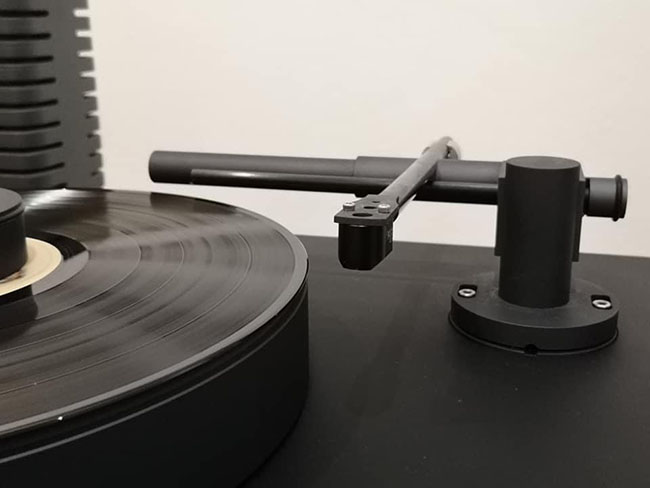
Technically Speaking
 Charisma Audio cartridges are designed by Li and the cartridge manufacturer. Most parts are custom made, except for the styluses sourced from Namiki Japan. Parts are sent to the cartridge maker for primary assembly work, but the final adjustment and fine-tuning are performed by Li, the same as it was for the Charisma Audio Musiko turntable and Musiko tonearm. All packaging is done in Canada. The ECO arrived in a simple 3-inch cubed cardboard box with a black and white label saying “Charisma Audio” on one side of the box and “ECO” on the other. Inside the box was a round plastic jewel box with the ECO mounted inside. All this came inside a Canadian shipping box, neatly packed, safe, and secure.
Charisma Audio cartridges are designed by Li and the cartridge manufacturer. Most parts are custom made, except for the styluses sourced from Namiki Japan. Parts are sent to the cartridge maker for primary assembly work, but the final adjustment and fine-tuning are performed by Li, the same as it was for the Charisma Audio Musiko turntable and Musiko tonearm. All packaging is done in Canada. The ECO arrived in a simple 3-inch cubed cardboard box with a black and white label saying “Charisma Audio” on one side of the box and “ECO” on the other. Inside the box was a round plastic jewel box with the ECO mounted inside. All this came inside a Canadian shipping box, neatly packed, safe, and secure.
FOR THE MOST PART, the ECO is a rather plain and unassuming-looking cartridge on the outside. It’s black with white ECO lettering on it, and that’s about it, on the initial look. On closer examination, the ECO does look to be well made; the connector pins on the back are spaced far enough apart not to cause any setup problems as I’ve had with some other cartridges. This is one part of the cartridge setup to take for granted easily. Still, the first time you have problems with cartridge lead connectors fitting over pins, you learn to appreciate the cartridge designer’s foresight. My cartridge setup man felt it was worth mentioning how well made the cartridge appeared to be, echoing my initial thoughts and the ease with which it could be setup. The only thing that seemed different about the ECO was its white ceramic cantilever. But other features of this cartridge made it appealing to me, as well. I have always appreciated the sound of cartridges with aluminum bodies. Back in my Linn cartridge days, the aluminum-bodied cartridges always seemed to have a lot of detail and/or information coming from them due to their seeming lack of resonance inside the body. The ECO’s low-medium compliance figure of 12 um/nM also appealed to me. I have always had medium to high mass tonearms, beginning with a Zeta, SME IV, SME 309, and my current Rowland Compliment has always made me wary of matching cartridge compliance to my tonearm. Lastly, I have always preferred the sound of the lower output cartridges. The ECO’s .38 mV output fits the bill very nicely in this respect. One last point of emphasis I need to note is that Bernard said it was important to put in the 30 hours of break-in time to start to get the ECO to reveal its full capabilities. I did my due diligence and put in my 30 hours of getting up and down and changing album sides, all for you, dear readers. With that being said, let the listening begin.
How It Sounds
The sound of the ECO is a different sound, in a good way, from what I was expecting. I have found, in my systems, with my setups, low-output MC cartridges with the structural rigidity that you typically get with aluminum body cartridges tend to sound very detailed and very extended in the high end. The sound of the ECO is very natural, even organic, and very engaging in that it sounds more life-like. Yes, my Transfiguration Phoenix sounds slightly, emphasis on slightly, more detailed, and maybe a hint more bit of air, but the ECO has that little bit more life-like liveliness that fleshes out the music and makes it sound more appealing. It’s easy enough to separate, and pull apart the performance of the ECO with the highs and lows and midrange, but I want to emphasize how musically engaging this cartridge is. The high-end performance of the ECO is good, with plenty of air and extension delivered naturally. The midrange performance of the ECO is exemplary and fleshes out vocalists, horns and saxophones, and guitarists. It has a nice balance of detail and bloom without being soft and tubey. The bass performance of the ECO is very good, with a lower midrange-upper bass that is tuneful and has a toe-tapping quality. The ECO delivers its sound with the clarity and openness that you find with cartridges that cost much more money, so the ECO’s delivery was surprisingly good and better than I expected. Piano music sounded natural and faithful to what pianos sound like in real life.
The attack on the keys and the decay of the notes sounded true to life. A word on cartridge loading is in line here. I did most of my listening with the ECO loaded at 200 Ohms and at 300 Ohms which sounded a bit livelier. I liked them both but did most of my critical listening at the 200-Ohm load. For those who like to dial things in, Bernard says 250-Ohm loading would be ideal, and I concur. The ECO sounds tonally precise, with maybe a touch of warmth, but not objectionably so. It lends itself to a more natural sound that allows the listener to feel like they’re listening to a live performance.
The ECO’s tracking ability is good and much better than average. This cartridge’s dynamic range is seemingly limitless. What I found to be even more impressive is the ECO’s marginally different tonal palette than the Phoenix. I have found that many cartridges that are both extended in the upper ranges and have the detailed sonic character tend to handle dynamics easier than the warmer-sounding cartridges without changing their character. Even though the ECO is a little warmer than the Phoenix, it keeps highly dynamic tracks intact without losing their way. The ECO’s imaging capabilities are a little better than average, but it’s the quality of those images contained within the stage that caught my attention. The performers on the stage were rendered with a sense of being palpable and alive. The ECO’s ability to throw such a believable stage and image was a pleasant surprise, especially at its price.
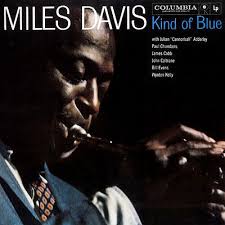 Here are some of my musical resources used to evaluate the ECO. I’ll start off with the classic standard Miles Davis’ album Kind of Blue [Columbia], probably the world’s most perfect jazz recording. Let me flat-out say; that if you don’t have the vinyl version in your collection, you haven’t heard this album. Digital files and CDs have come a long way, especially with this offering, but the vinyl version sounds better, more organic, and more natural. From the album’s opening track, “So What,” Paul Chamber’s opening bass lines, which are not only heard but felt, to Miles’ following that up with a little enter play between trumpet and bass, then to a saxophone entrance that is unmatched in all of jazzdom by John Coltrane, all in the first few minutes of this beautiful track. I get goosebumps just thinking about it. The ECO’s bass performance with this album is tuneful and tight. The horn and the saxophones are reproduced with a good amount of detail. It was easy to tell when Coltrane was playing and when Cannonball Adderley would take over. Give Cannonball Adderley’s Autumn Leaves [Blue Note] if you want to double your fun. Well, it’s really Miles Davis’ crew minus John Coltrane, but there are still some great performances done by great musicians who are performing some great solos. This album is no less enjoyable to listen to and no less deserving of your attention. Miles’ muted trumpet sounded incredibly more expressive with the ECO. Another album I got a kick out of listening to with the ECO was Hector Berlioz’s Symphony Fantastique [Telarc] with Lorin Maazel and The Cleveland Orchestra. This marvelous recording offers a little bit of everything in a classical album. Dynamics are off the chain – that’s both macro and micro-dynamics; bass that is deep, the horns blare while the imaging is broad and deep. The ECO reproduced them all believably well. The ECO’s warm tone seemingly breathed a bit of life and smoothness into this album with abundant detail and dynamics.
Here are some of my musical resources used to evaluate the ECO. I’ll start off with the classic standard Miles Davis’ album Kind of Blue [Columbia], probably the world’s most perfect jazz recording. Let me flat-out say; that if you don’t have the vinyl version in your collection, you haven’t heard this album. Digital files and CDs have come a long way, especially with this offering, but the vinyl version sounds better, more organic, and more natural. From the album’s opening track, “So What,” Paul Chamber’s opening bass lines, which are not only heard but felt, to Miles’ following that up with a little enter play between trumpet and bass, then to a saxophone entrance that is unmatched in all of jazzdom by John Coltrane, all in the first few minutes of this beautiful track. I get goosebumps just thinking about it. The ECO’s bass performance with this album is tuneful and tight. The horn and the saxophones are reproduced with a good amount of detail. It was easy to tell when Coltrane was playing and when Cannonball Adderley would take over. Give Cannonball Adderley’s Autumn Leaves [Blue Note] if you want to double your fun. Well, it’s really Miles Davis’ crew minus John Coltrane, but there are still some great performances done by great musicians who are performing some great solos. This album is no less enjoyable to listen to and no less deserving of your attention. Miles’ muted trumpet sounded incredibly more expressive with the ECO. Another album I got a kick out of listening to with the ECO was Hector Berlioz’s Symphony Fantastique [Telarc] with Lorin Maazel and The Cleveland Orchestra. This marvelous recording offers a little bit of everything in a classical album. Dynamics are off the chain – that’s both macro and micro-dynamics; bass that is deep, the horns blare while the imaging is broad and deep. The ECO reproduced them all believably well. The ECO’s warm tone seemingly breathed a bit of life and smoothness into this album with abundant detail and dynamics.
Franz Schubert’s Symphony No. 8 (Unfinished) [Columbia] by Bruno Walter and The New York Philharmonic is another one of those albums I like to listen to for the way it was recorded. This recording has a lot of air, the instrumental decay in the large hall, and a warm tonal structure. The ECO shows how well this recorded performance was, with the separation of the instruments and the foundation provided by its bass capabilities. Patricia Barber’s Live: A Fortnight in France [Blue Note] is a splendidly recorded album due to the exceptional mastering job. This album was recorded at several venues in and around France (La Rochelle at La Coursive, Metz at l’ Arsenal, and Paris at La Cigale). The ECO does a superb job of taking the live information from these venues and magically transporting them into your listening room so believably. My room was filled with air and ambiance from the recorded events, and Ms. Barber and her accompanists (Neal Alger on guitar, Eric Montzka on drums, and Michael Arnopol on bass) never sounded better as this is one of her best efforts. I like the entire two-album set, but tracks such as “Norwegian Wood,” “Witchcraft,” “Pieces,” and “Crash” were particularly enjoyable.
A Few Final Thoughts
 The ECO was indeed a surprisingly fun and rewarding review to do. The ECO elevated my music listening experience to a level I had not expected, and to a level, I felt bested my beloved Transfiguration Phoenix in overall musical enjoyment. There are some other performance parameters of note to share with you. The ECO is a very good tracker. It tracked some of my oldies-but-goodies that, in some instances, I thought were unlistenable, such as an old copy of Carlos Santana’s Caravanserai [Columbia] and an old Miles Davis Quiet Nights [Columbia]. In both albums, and several others, the ECO tracked them like a little bloodhound with no skips; no getting hung up, just some minor surface noise which was to be expected. In this respect, the ECO did every bit as good of a job of tracking as my Phoenix does, which was a pleasant surprise and is very good. A note on the break-in is in order. My Adam’s Apple fell into the pit of my stomach when Bernard Li advised me to let the ECO break in for 30 hours before I started doing any serious listening. After having had a 500-hour break-in with my Holo May Kitsune DAC and the very fine Pink Faun digital cable, I immediately thought, “not again.” But at least 30 hours was much easier to do. The ECO did not sound bad at all on the initial listen, so much so that I thought that Li had sent me a cartridge that was already broken in. The ECO seemed brand new when I received it, so I don’t think that was the case. I did the 30-hour break-in as Li asked before I did any listening, so all my previous comments were of the ECO after it had played for 30 hours.
The ECO was indeed a surprisingly fun and rewarding review to do. The ECO elevated my music listening experience to a level I had not expected, and to a level, I felt bested my beloved Transfiguration Phoenix in overall musical enjoyment. There are some other performance parameters of note to share with you. The ECO is a very good tracker. It tracked some of my oldies-but-goodies that, in some instances, I thought were unlistenable, such as an old copy of Carlos Santana’s Caravanserai [Columbia] and an old Miles Davis Quiet Nights [Columbia]. In both albums, and several others, the ECO tracked them like a little bloodhound with no skips; no getting hung up, just some minor surface noise which was to be expected. In this respect, the ECO did every bit as good of a job of tracking as my Phoenix does, which was a pleasant surprise and is very good. A note on the break-in is in order. My Adam’s Apple fell into the pit of my stomach when Bernard Li advised me to let the ECO break in for 30 hours before I started doing any serious listening. After having had a 500-hour break-in with my Holo May Kitsune DAC and the very fine Pink Faun digital cable, I immediately thought, “not again.” But at least 30 hours was much easier to do. The ECO did not sound bad at all on the initial listen, so much so that I thought that Li had sent me a cartridge that was already broken in. The ECO seemed brand new when I received it, so I don’t think that was the case. I did the 30-hour break-in as Li asked before I did any listening, so all my previous comments were of the ECO after it had played for 30 hours.
Just some notes on the sound during the break-in. The upper-frequency detail came in at about 5-10 hours and became airy and extended at the 20–25-hour mark. That degree of presence and realism came into being at about 32-35 hours and only got better the more I played it. Bass performance was good up until the 25-hour point, which is where I started to notice a little more grunt and power emanating from my speakers, and it’s still improving. So, in case you’re contemplating getting an ECO, and Li recommends the 30 hours of break-in, trust me, just do it. You won’t have any regrets whatsoever.
Speaking with a good friend of mine (a pure vinyl fanatic) about the ECO, he was impressed by what I was describing. I ended my comments by telling him there was no need to sit on that van den Hul Grasshopper, saving it for a rainy day because when he’s done wearing it out, he could get an ECO. And though it’s maybe not quite at that level of performance, he would still get a lot of vinyl enjoyment for his money and not have any regrets. He ended our conversation by saying that that was precisely what he would do. The Charisma Audio ECO cartridge, just like the Pink Faun USB digital cable, brings a whole lot of performance and improvement to your system for just $795. These days, purchasing an ECO is a no-brainer and a logical choice for what cartridges are going for and the level of performance provided. Most highly recommended.


mike wright
Specifications:
- Cartridge weight: 11 g
- Cartridge body: aluminium
- Cantilever: white ceramic
- Stylus: super elliptical nude diamond
- Vertical Tracking Angle: 20 degrees
- Coil: pure iron crossed-coil with OFC copper
- Output Voltage: 0.38 mV at 3.54 cm/sec.
- Internal Impedance: 8 ohms
- Frequency Response: 20 – 20,000 Hz ± 1 dB
- Channel Balance: better than 0.5 dB
- Channel Separation: better than 25 dB
- Dynamic Compliance: 12 um/mN
- Recommended Loading: 100 – 1,000 ohms
- Recommended Tracking Force: 1.9 g ± 0.1 g
- Tracking ability at 315 Hz / 2 g: 80 uM
- Recommended Tonearm Mass: medium
- Break-in Period: 30 hours
- Price: Charisma Audio ECO Cartridge – USD 795.00
Address:
Charisma Audio
Suite 86, Unit A14
4261, Highway 7
Markham, Ontario
Canada L3R 9W6
Telephone: (905) 470-0825
Fax: (905) 470-7966
E-mail: charisma@rogers.com
Contact: Bernard Li
Website: www.charismaaudio .com
Mike’s Associated Equipment:
Speakers
Tekton Design Moabs
Amplifier
VAC Signature 200 iQ Amplifiers (used as stereo and mono amps)
BSC Audio BSC100m 100-Watt Mono-amps
Preamplifier
VAC Renaissance Mk V with Phono
Analog
Merrill Heirloom Turntable
Rowland Research Consonance Tonearm
Transfiguration Phoenix Cartridge
Digital
Asus Laptop w/Fidelizer Pro, Roon, and JRiver v.26 for Hi-Res Files
Holo May Kitsune III DAC
Bricasti M5
Marantz SA-7S1 CD Player
Cables
Dynamic Design Heritage Balanced Interconnect
Dynamic Design PAAPI
Silversmith Fidelium Speaker Cable
Pink Faun USB
AnnaLyric Power Cords
Essential Sound Product Essence II Power Cords
Power Line Conditioner
Inakustik 3500P (Distributor loan)
Essential Sound Products Essence Power Distributor
Accessories
Star Sound Apprentice & Rhythm Platforms – for amps
Star Sound Sistrum Rhythm Two Platform Stand
Symposium Acoustics Ultra Platform
Symposium Acoustics HDSE Rollerblocks
Symposium Acoustics +2 Rollerblocks
Adona GX4 Equipment Stand
Epiphany Stand Systems – Celeste Reference Stand
Stereo Times Masthead
Publisher/Founder
Clement Perry
Editor
Dave Thomas
Senior Editors
Frank Alles, Mike Girardi, Russell Lichter, Terry London, Moreno Mitchell, Paul Szabady, Bill Wells, Mike Wright, and Stephen Yan,
Current Contributors
David Abramson, Tim Barrall, Dave Allison, Ron Cook, Lewis Dardick, John Hoffman, Dan Secula, Don Shaulis, Greg Simmons, Eric Teh, Greg Voth, Richard Willie, Ed Van Winkle, Rob Dockery, Richard Doron, and Daveed Turek
Site Management Clement Perry
Ad Designer: Martin Perry


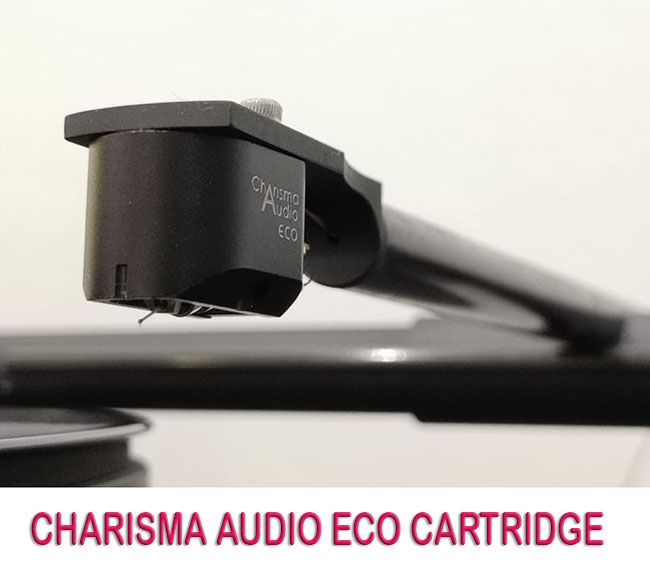

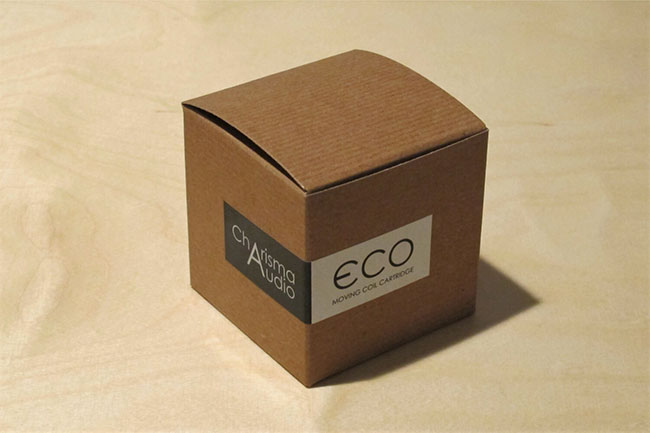
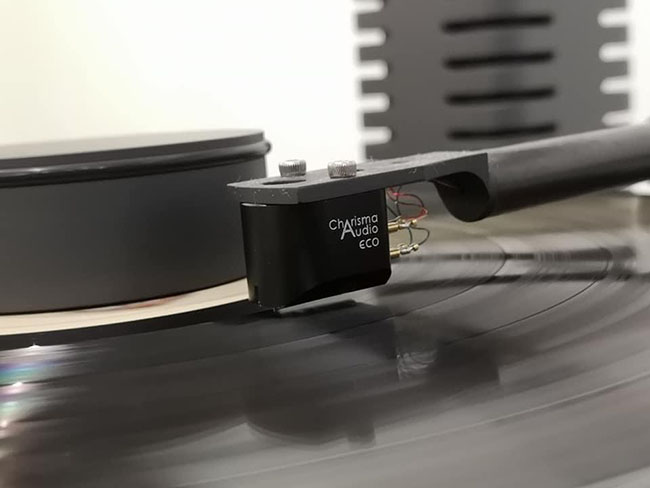





Be the first to comment on: Charisma Audio ECO Cartridge by Mike Wright